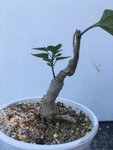HorseloverFat
Squarepants with Conkers
Look for Service Berry, or Saskatoons, genus Amelanchier.
Quick inquiry.
I have been more actively seeking the Saskatoons out now (as well as utilizing the search feature more often
My question regarding the Amanchalier is: When I was observing one such specimen today (which was almost completely uprooted by high floodwaters), i got a very in-depth “peek” at the root system... and this specie has a structure which leads me to believe they will develop from root cuttings, as well... this would ALSO mean they are less “particular” about collection timing.. but fairly “particular” about aftercare... am I KIND of on the right mental “track” here?
Thank You





























